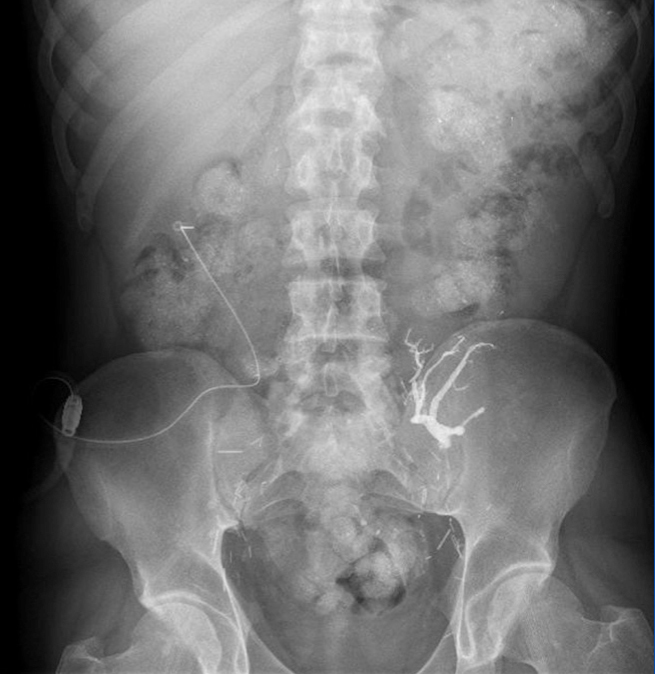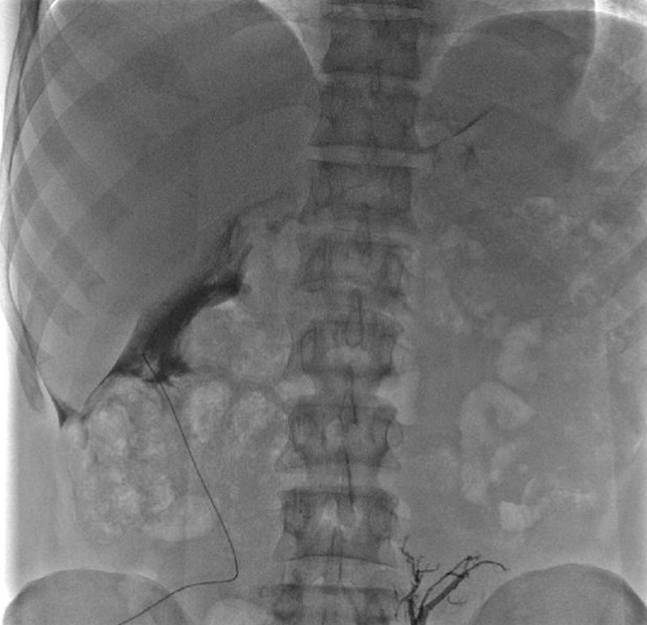To the Editor,
Clinicians are frequently faced with relatively banal issues that become factors of diagnostic confusion or can even trigger more severe complications.
In patients treated with peritoneal dialysis, constipation can become a very difficult problem, and can even reach the point of completely impeding the drainage function of the peritoneal catheter.1 This is the result of displacement of the catheter towards the upper abdomen and the fact that, even with a properly positioned catheter, a rigid intestine hinders the recovery of infused peritoneal fluid. Over 50% of catheter dysfunctions are related to constipation, and at times this necessitates intensive laxative treatment.2 Constipation is also an issue in the development of hernias and complications from pressure on the abdominal wall, and can even facilitate the passage of bacteria from the intestinal lumen, leading to peritonitis.3
Constipation can be associated with several different factors, such as a certain degree of intestinal paresis, insufficient mobility, and a diet low in fibre, which is often the result of diets that restrict the intake of fruits, and frequently is a result of the medications administered for concomitant problems. Several treatments administered to dialysis patients can generate or aggravate this situation, such as the resins used for hypercalcaemia and phosphate binders. Lanthanum carbonate is a phosphate binder, without calcium or aluminium, which is effective in controlling hyperphosphataemia, and being a radiopaque compound, results in very characteristic radiological images.4 However, as is the case in other chelating agents, it can produce constipation that is difficult to treat using conventional measures.5 A peritoneography can aid in the diagnosis of this type of mechanical issue.
We present the case of a patient in which the administration of lanthanum carbonate produced severe constipation and displacement of the catheter to the point where peritoneal dialysis treatment became impossible.
Ours was a 47 year-old patient with chronic renal failure from interstitial nephropathy secondary to reflux, who had been on haemodialysis since 1990. He underwent his first kidney transplant in 1991, which was then removed due to chronic dysfunction, and underwent a second transplant in 1999, which was again lost to the same reasons. He returned to haemodialysis in 2010. Due to intolerance to the second kidney, the patient underwent graft embolisation. He was receiving lanthanum carbonate at 750mg/8 hours due to secondary hyperparathyroidism and hyperphosphataemia. Due to several failed vascular accesses, it was suggested that the patient be transferred to peritoneal dialysis, and a straight, double-cuff Tenckhoff catheter was implanted. During training, we detected catheter malfunction with incomplete drainage, so we performed abdominal x-rays (Figure 1) and peritoneography (Figure 2). In addition to the remnants of the radio-opaque material from the graft embolisation, we observed a large quantity of faecal matter throughout the large intestine, with radiolucent images indicating the presence of lanthanum carbonate. The peritoneal catheter was poorly positioned towards the hepatic flexure of the colon, and the peritoneography dye was completely restricted between the transverse colon and the lower edge of the liver, which was clearly outlined, without disseminating into the rest of the abdominal cavity. Suspension of the lanthanum and intensive laxative treatment progressively resolved the constipation and dye restriction, although it did not resolve the poor positioning of the catheter, which had to be relocated.
The radiological images presented show the mechanism of action and the mechanical consequences.
Conflicts of interest
The authors affirm that they have no conflicts of interest related to the content of this article.
Figure 1. Simple abdominal x-ray
Figure 2. Peritoneography









